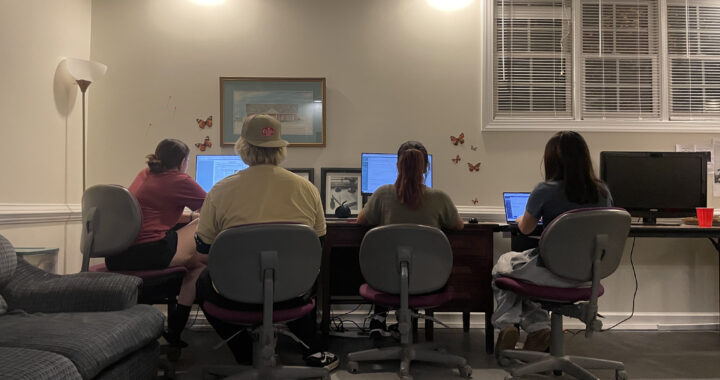Sex-Ed Videos: Funny but Unhelpful
3 min readBY K.J. ADLER
I remember when I took my first sex-education “course.” I was 10 and in the fifth grade. With a somber expression, Mrs. Nickels ushered us girls out of the room to the next door fifth-grade class. We passed a line of confused boys who were heading to our classroom.
Split from the embarrassment of being around the opposite sex, the other teacher, Mrs. Browne, began with saying that we were to watch an informational video called “Know Your Body,” which was about our bodies and how the issues covered in the film were not only helpful to understand what would be happening to us over the years but also to our fellow classmates.
After the lackluster introduction, she turned on the television, flipped out the lights, and stood behind the class, monitoring anyone who dared snicker at the very important issues at hand: breast development, periods, and the growth of hair in funny places, all taught by a naïve young woman named Jenny and her understanding mother.
But the best part was yet to come. After Jenny had conquered all of her fears and misunderstandings about her body, we moved on to young Daniel who was acting kind of funny before going to school.
His father asked if there was something wrong and Daniel, in a very hesitant state, confided in his dad that something had gone horribly horribly wrong the night before. Apparently, along with shaving, changing voices, and uncontrollable erections, young boys also have “wet dreams,” a perfectly normal side effect of growing up.
When the films were finished, the girls from my class and I walked back down the hall, passing the same boys as they returned to their class. All of our eyes stared curiously at their crotches, while they all snickered and ogled where our breasts were to grow.
Despite the wonderful incorporation of film with sexual education, such films as “Know your Body” are apparently not very effective. According to thenationalcampaign.org, approximately one million teens become pregnant each year in the United States, with approximately 520,000 births, 405,000 abortions, and 80,000 miscarriages.
Along with high pregnancy rates, we are also dealing with a huge number of STD cases.
I came across a Washington Post article about the sex-education curricula in Western Europe. The percentage of teens who get pregnant in the Netherlands is less than a fifth of the percentage of pregnant teens here in the US.
So what’s the difference? Besides generally having families that are open to discuss sexual issues with their children at very young ages, there is a social acceptance of sexual activity throughout Europe, thus feeding the stereotypes many Americans have with the romantic French and sexy British.
But the most notable difference is the huge encouragement of using contraceptives, even at the young ages of 10 to 12. I didn’t even know what a condom was until I was thirteen or that there were condoms that women could put on.
Europeans also incorporate straightforward messages on how to prevent STDs and teen pregnancy, which helps offset the impact on teens of sexually explicit ads, movies and other mass media.
While I did find myself taken aback by the European tactics, especially with how young a lot of these kids begin to learn about sex, the statistics don’t lie. From the article I found that the key component to Europe’s success was consistency. Teachers, families, society alike advocated the idea of safe sex rather than abstinence.
Now it is true that the safest way from any sort of disease or unwanted baby is by keeping your legs shut, but people still seem to enjoy taking the risk. I’m not saying that abstinence isn’t the right way for some people. Rather, I’m saying that sex does happen and in encouraging safety and proper usage of condoms, all of the problems we seem to still have with teen pregnancy could be greatly reduced.
However, I think those sex videos should still be shown. They’re priceless.











